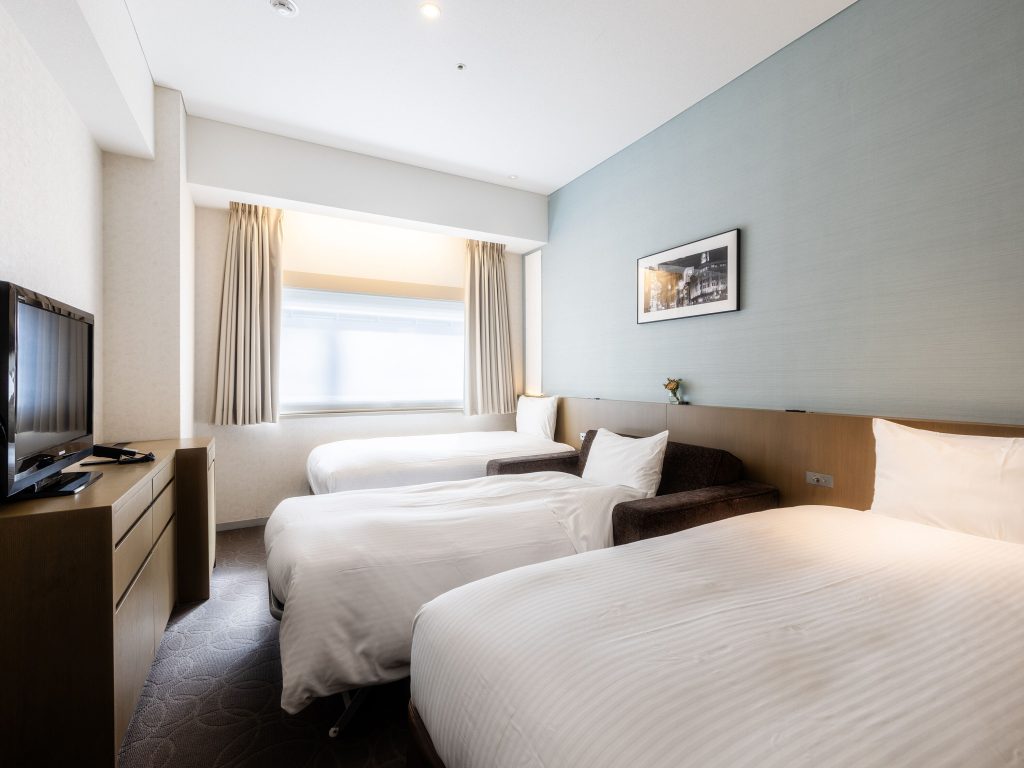6 Day Tokyo Itinerary: How to Spend SIX Days in Tokyo For First-timers
Last Updated on October 29, 2025 by Audrey
This 6 day Tokyo Itinerary covers everything you could ever want in your first trip to Tokyo!

Got 6 days to explore Tokyo? That’s the perfect amount of time to dive into the city’s best highlights at a relaxed pace, and even squeeze in a day trip beyond the city.
In this itinerary, I’m sharing my favorite parts of Tokyo—places I've discovered through multiple visits, discovering hidden gems, and falling more in love with this wonderful place each time.
I’ve organized each day by area to make exploring easier, with the last day reserved for a day trip to explore Nikko, Mt Fuji, or whatever you want. Let's dive in.
SHORT ON TIME? Use these shortcuts to plan your Tokyo Trip
🏠Book accommodation in Tokyo: My FAVORITE hotel in Tokyo is Tokyu Stay Shinjuku for the in-room washer/dryers and great location!
🏔️Find activities and tours for Tokyo: I LOVE this tour that takes you to see Mount Fuji, Oishi Park, and shopping at Gotemba Premium Outlets! It was one of my favorite activities in Japan.
🚌Book the JR Pass and Tokyo Wide pass on JR Pass

6 Day Tokyo itinerary: Overview and Map
This itinerary consists of 5 days in Tokyo, broken into sections of the city, with a day trip on the 6th day.
1️⃣: North Tokyo Asakusa, Sensoji Temple, Ueno, Akihabara
2️⃣: Central Tokyo Imperial Garden, Tsukiji Fish Market, TeamLab Borderless, Ginza
3️⃣: Northwest Tokyo Meiji Temple, Omotesando, Harajuku, Shibuya, Centre Gai
4️⃣: West Tokyo Shinjuku, Gyoen Garden, Kabukicho, Omoide Yokocho, Golden Gai
5️⃣: South Tokyo Gotokuji Temple, National Art Center, Roppongi, Akasaka
6️⃣: Day trip Choose between Mount Fuji, Hakone, Nikko, or Disney Sea

6 Day Tokyo Itinerary for First Time Visitors
Here's my in-depth itinerary on how to spend 6 fays in Tokyo.
Day 1: Asakusa, Sensoji Temple, Ueno, Akihabara
Asakusa
Asakusa is a district in north Tokyo, most well known for being home to Sensoji temple, the largest and oldest Buddhist temple in Tokyo. However, temple aside, there's food, arcades, and shops to explore!
First, we're going to visit the temple before it gets too crowded, then go back to the surrounding Nakamise-dori Street to do some browsing afterward. You can either explore on your own, or book a guided tour of the city. I've included some tours below.
visit Sensoji Temple

Your day will start once you get to Asakusa Station. As you start heading to Sensoji Temple, you'll notice Kaminarimon (Thundergate), a hallmark temple gate with an enormous, bright red lantern. Many visitors rent kimono and take photos at the entrance to Sensoji Temple.
While you're taking photos, don't forget to take a second to spot the statues of the god of thunder and the god of wind guarding the lantern on either side.
Once you head past Kaminarimon, you'll be on Nakamise-Dori Street, a bustling shopping avenue lined with street stalls, restaurants, and souvenir shops. We'll head to Sensoji Temple first to beat the crowds, then explore Nakamise-dori Street after.
At the temple, take your time to wander around Sensoji's main hall and get a view of the impressive five-story pagoda. Surrounding the temple is a tranquil garden pleasant to stroll around.
While you're here, you can pray for good luck, and pick up some good luck charms to support the temple.
Sensoji Temple (浅草寺, Sensōji)
Opening Hours: Main Hall: 06:00-17:00
Temple grounds: Always open, feel free to wander around at night.
Admission: Free!

Walk around Nakamise-Dori

Once you've explored Sensoji Temple, it's time to stroll down Nakamise Street! It's the perfect spot to grab lunch, sample snacks, and shop to your heart’s content!
The first time I visited Japan, Nakamise Street was one of the first places I went to. It was my first exposure to Japan and it was super fun walking around all the shops and eating street food.
I've now realized that this street is quite geared towards tourism and mostly sells souvenirs, but regardless, it's a fun place to walk around. You'll also find great clothing stores, houseware shops, and arcades around the surrounding area.
After you've finished browsing, head over to Rokku Broadway for lunch, one street over from Nakamise.

Some of my favorite places in Asakusa:
- Kukurihime Coffee: a sit-down cafe with delicious dessert sets
- Torasuzu: delicious izakaya, skewers, and seafood. Perfect for lunch!
- Wagyu Ichinoya Asakusa: A steakhouse that sells amazing wagyu-don for an affordable price.
- Yoroiya Ramen: Tasty ramen shop that also sells vegan options.
- Hikeshi Spirit: They sell really cool anime clothing and unique souvenirs! My brother picked up a cool Godzilla shirt here.
- Ginkado: A dessert stall that sells delicious daifuku mochi desserts! I picked one up on my way to Sensoji Temple and it was too good.

Ueno Park
Now we'll head over to Ueno Park, where you can potentially visit Tokyo National Museum. Head back to Asakusa Station and take the subway to Ueno Station.
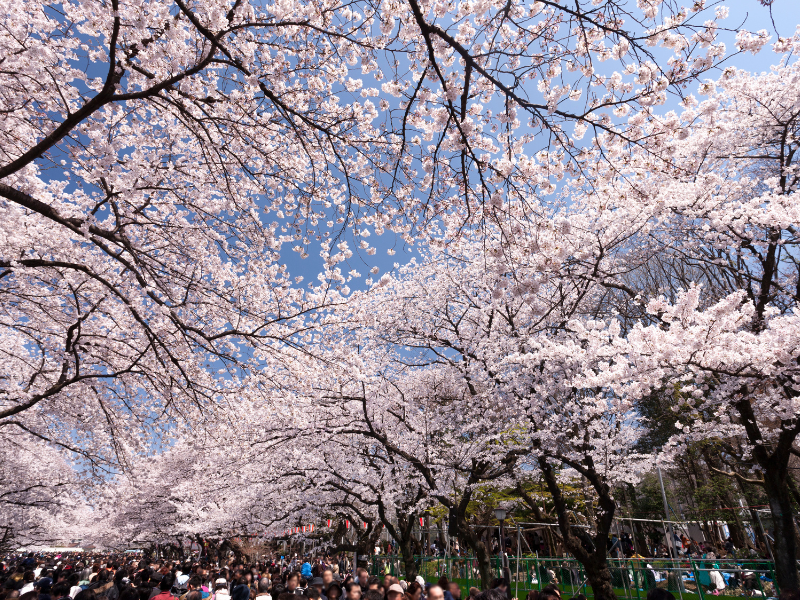
Ueno Park is known for a variety of attractions. There are many museums such as Tokyo National Museum, the Ueno Zoo, the Shitamachi Tanabata Museum, and several others.
I particularly love visiting Ueno during cherry blossom season in March-April. Thousands of cherry blossom trees bloom and you can rent a boat on Shinobazu Pond and buy food from local street stalls. During the summer, lotus bloom in the pond in mid-July.

I've chosen Tokyo National Museum, but feel free to look at your options and you'd rather visit somewhere else.
Tokyo National Museum
Tokyo National Museum is Japan's oldest museum and displays awesome artworks and Asian antiquities found in Japan and Asia.
With 120,000 pieces of artifacts and art featuring samurai armor, ancient pottery, and beautiful paintings, you'll learn so much about Japan's history and culture during your visit here.

The museum is large and you can easily spend the whole day here. I've put it in day 1 assuming that you'll spend at least 2-3 hours here, but if you want to explore the entire museum, consider dedicating a whole day to visiting.
💡 Pro Tip: The museum closes at 17:00, so aim to arrive at least around 14:00 to walk around for a few hours.
Tokyo National Museum
Address: 13-9 Uenokoen, Taito City, Tokyo 110-8712, Japan
Opening hours: 9:30-17:00
Admission: $6.50
Official Website

Bargain Shop at Ueno Ameyoko

If you explored the museum until closing time, it's probably around 17:00 now. You can walk over to Ueno Ameyoko to do some shopping next! It's conveniently located just a few minutes walk away from the park.
Ueno Ameyoko is a budget shopper's dream. You can find tons of discounted items here like pre-loved luxury items, souvenirs, snacks, cosmetics, and whatever else you can think of.
My favorite shops around here are Daikokuya, a pre-loved luxury goods shop, and Bookoff Plus Ueno Hirokoji, which sells thrifted clothes, manga, books, and shoes.
Most stores are open from 10:00-20:00, so swing by here if you feel like doing some shopping! There's also a local food and drink tour that takes you to hidden gems in Ueno.
Akihabara
If you still have some time in the day, you can visit Akihabara. It's a 12-minute train ride or a 17-minute walk from Ueno Park. Akihabara is known to be popular for anime-centric items and tech.
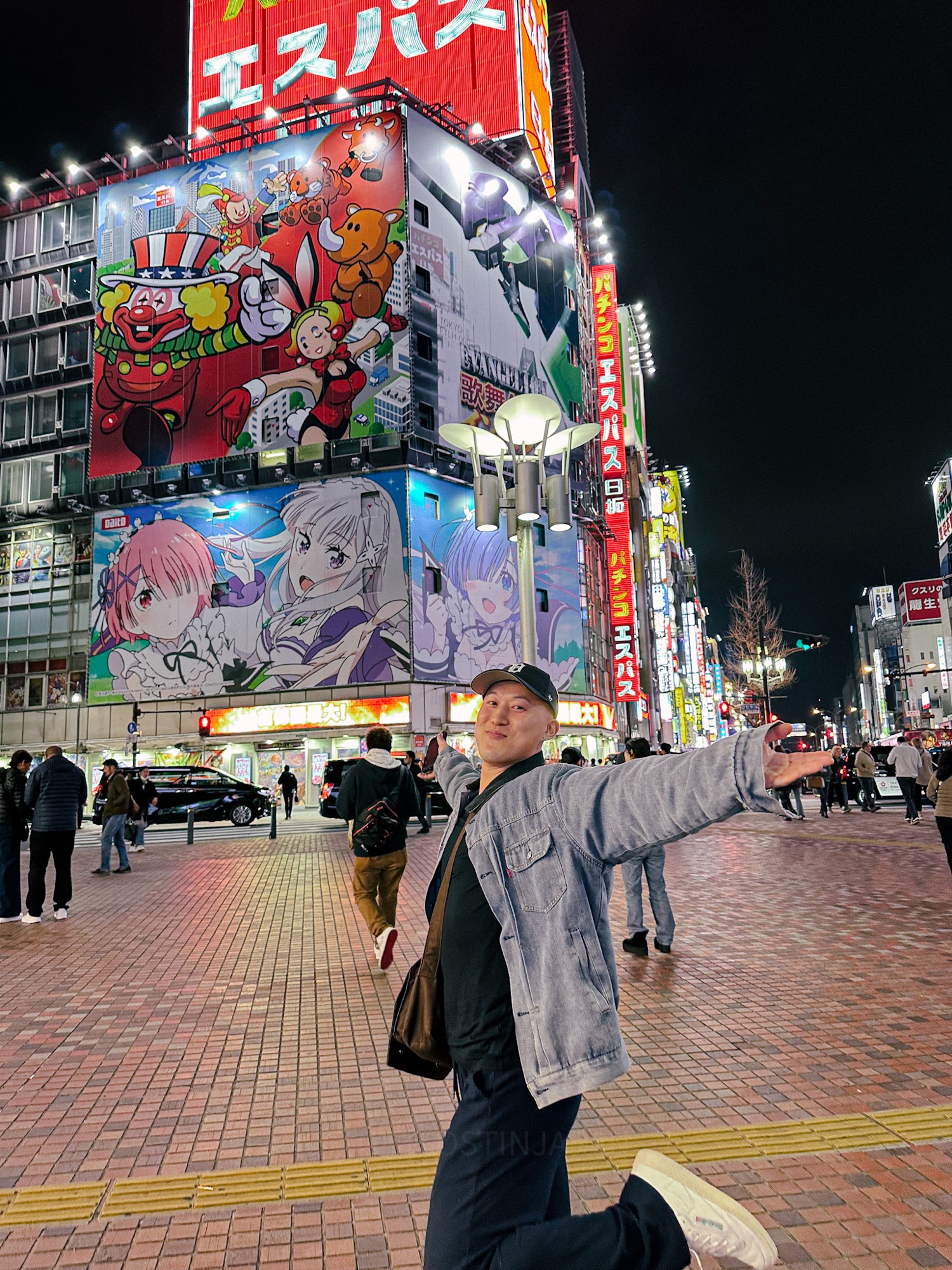
I used to write off Akihabara as being kind of boring, but after staying in the area recently, I've come to see the light.
There's tons of electronics and anime stuff here, like the huge Yodabashi Camera and Radio Kaikan Station. There's also maid cafes, and even go-carting around the streets of Japan.

Day 2: Imperial Palace, Tsukiji Market, Ginza
imperial palace
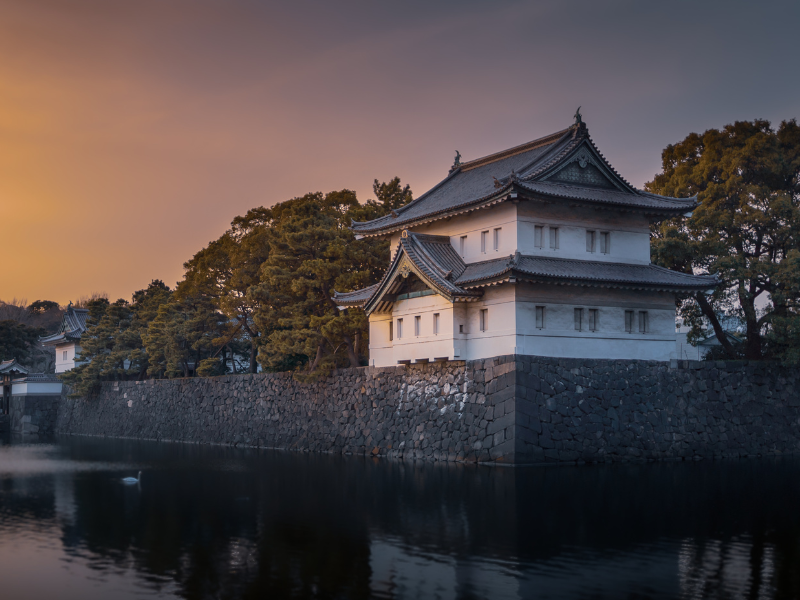
The first stop of day 2 is the Imperial Palace, right in the heart of Tokyo!
While the palace itself is closed to the public since it’s home to the Imperial family, the beautifully maintained palace gardens are open and free to explore.
If you want to dive deeper, you can join a 70-minute guided tour that includes part of the inner palace gardens. Tours run twice daily at 10:00 and 13:30 in English and Japanese, and are free of charge.
If you can't get a tour of the inner palace gardens, you can still tour the East Gardens with a guide. You’ll get to cross the iconic Nijubashi Bridge (the most famous bridge in Japan!), take in the serene lotus moat, and on a clear day, you might even catch a glimpse of Mount Fuji.
Imperial Palace Visiting Tips:
- If you book a tour, try to get there at least 30 minutes early. It's only a 10-minute walk from Tokyo station!
- Keep in mind if you want to tour the inner gardens, you'll probably want to visit on a Tuesday, Wednesday, Thursday, or Saturday. The East Gardens are closed on Mondays and Fridays, while the inner garden tours do not take place on Mondays or Sundays.
💡 Pro tip: if you visit on January 2nd or February 23rd, you have a chance to see the Imperial Family (Ippan Sanga), when palace grounds open.

Eat Street Food at Tsukiji market
Our next stop is lunch at Tsukiji Market! This popular marketplace is famous for its fresh seafood, incredible Japanese food, and mouthwatering snacks. I've stayed in the Tsukiji area before, and I looooooove this place! It's lively, fun, and the food is amazing.
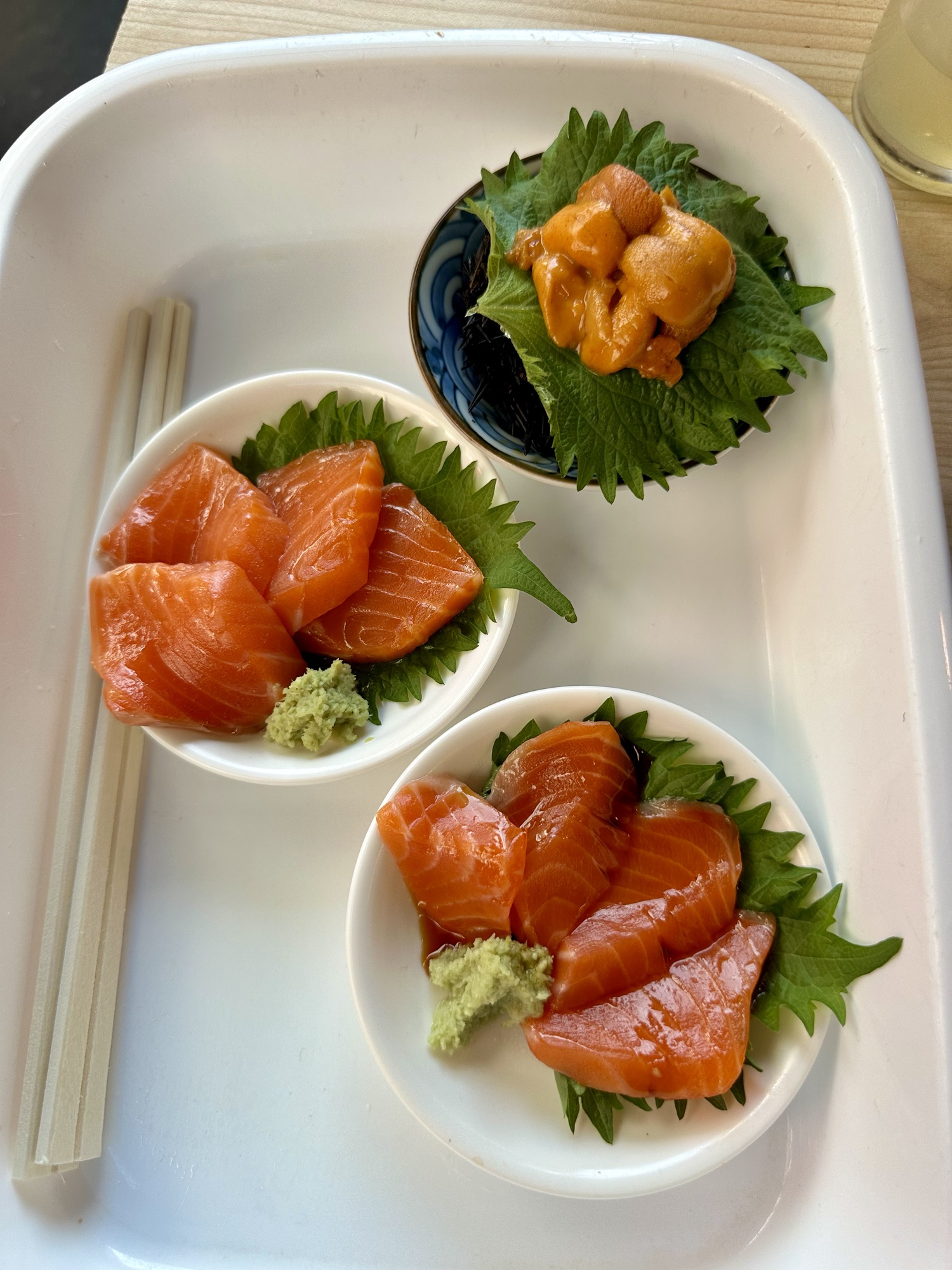
Tsukiji has gotten really popular in the last few years, so it can get super crowded, and the prices are not as cheap as they used to be. But I think Tsukiji Fish Market is still quite affordable, plus people there can speak pretty good English, and it's an exciting place to explore.
My favorite thing about Tsukiji is that you don't have to stick to one place. You can visit every stall and buy small portions so that you can try out everything. For details on the best foods to get at Tsukiji Market, click here.

I'll include my favorite shops here, but anywhere you wander into is going to taste delicious:
- Tsukiji Wine Stand 88: Wagyu Burgers
- Motodane: Sushi
- Marutama: Delicious peach ice cream!
- Ichifuji: Ceramics store where I bought a teapot and dishware sets. (In case you're curious, I had to haul all that stuff back to America, and it was a nightmare).
- Solatsuki: A very popular dessert stand known for mochi and fruit with hardened sugar.
💡 Pro Tip: After you purchase food, don't loiter around the shop stands! they need that space for new customers. They have designated areas where you can stand and eat.

Explore Teamlab Museum
After lunch, you'll hop on a train to TeamLab. But first, choose which location you want to visit. There are two TeamLab Museums in Tokyo, TeamLab Borderless and TeamLab Planets.
Both are equally amazing, and deciding which location to visit ultimately depends on three things: which location fits your schedule better, if you care about visiting Planets before it closes in 2028, and lastly, do you care if you take your shoes off?

TeamLab Borderless is located in Azabudai Hills near Roppongi and is a permanent exhibit. TeamLab Planets is located in Toyosu south of Tsukiji Market, and will be open until 2028.
For more details to help you decide which TeamLab to visit, read this post.

Shop around Ginza
After you leave the Imperial Palace, you'll be right next to Ginza, Tokyo's luxurious shopping district. I stayed here on my most recent trip to Tokyo and loved walking around the shops every night.

Ginza is the perfect place to buy preloved and new luxury brands, but even if you don't care for luxury, they have tons of other shops too, like the flagship Uniqlo and Muji stores. I spent a couple of hours alone just exploring Uniqlo. The prices are cheaper than in America, so it's worth a visit!
My favorite shops in Ginza:
- Allu: Pre-loved luxury. I bought a Preloved Van Cleef necklace here!
- Brand Off: Pre-loved luxury
- Uniqlo: General clothing store that is immensely popular. With 12 levels, you'll probably spend a couple of hours here.
- Muji: Flagship store selling stationery, home decor, and apparel.
- Dover Street Market Ginza: if you like brand names, Dover Street has a ton of shops and high-end brands.
- Chrome Hearts: An upscale streetwear brand that's very popular right now.
💡 Pro tip: Some recommend Ginza Itoya, a massive stationery store. You can get some terrific fountain pens here, but in general, I found it overpriced. It was fun to walk around and kill some time here but I would skip it.

Art Aquarium Museum
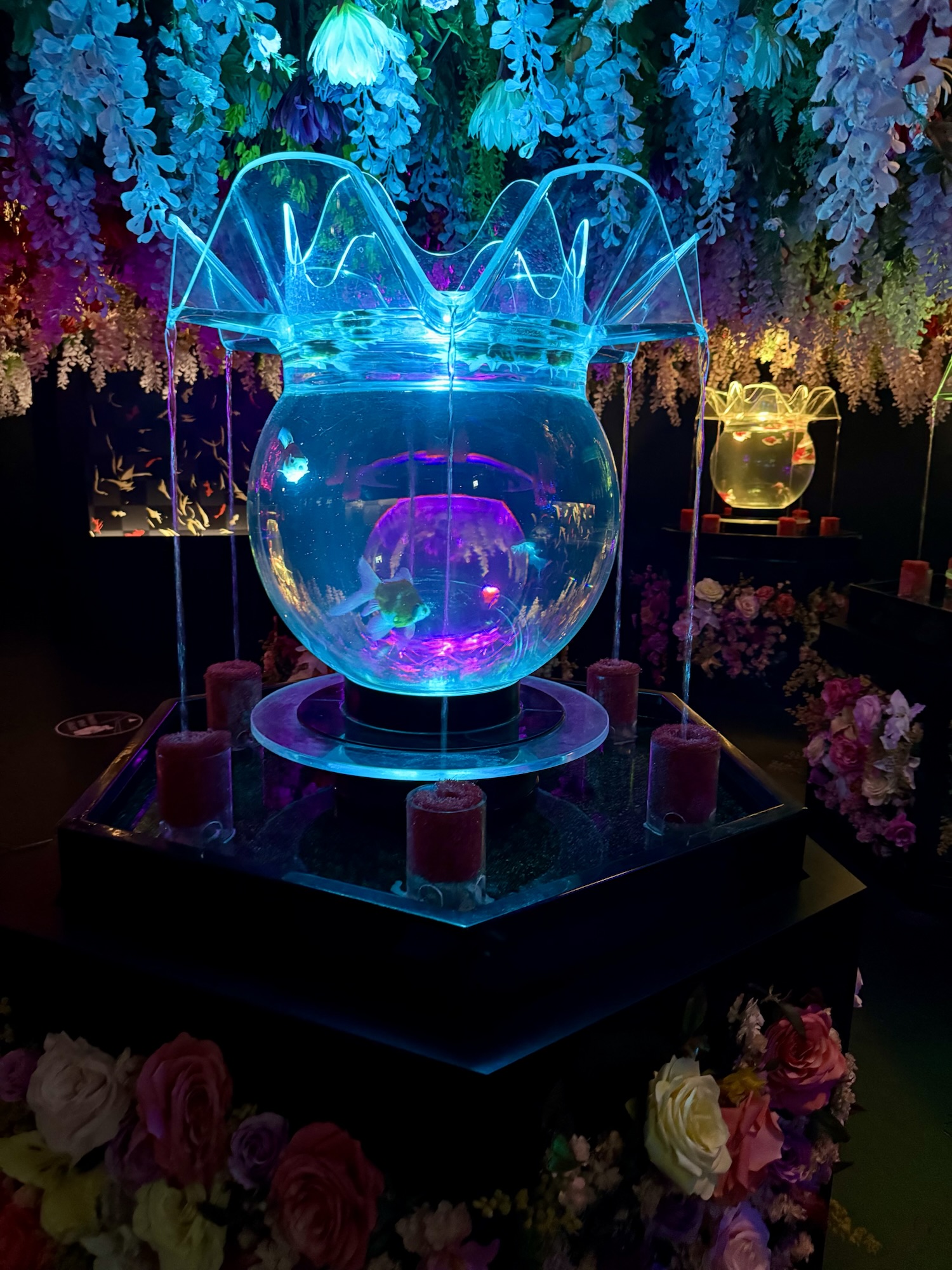
While you're in Ginza, consider checking out the Art Aquarium Museum! This unique attraction blends art and aquatics to create a stunning fantasy world of Japanese elegance, featuring vibrant and colorful goldfish displays.
I haven’t had the chance to visit myself, but a lot of my friends loved it. It’s a great option for a serene evening or even a romantic date night in Ginza!
Art Aquarium Museum
Address: 三越新館, 8階 9階入場口, 4 Chome-6-16 Ginza, Chuo City, Tokyo 104-8212, Japan
Opening Hours: 10:00-19:00
Admission: $16, Book your Art Aquarium Museum GINZA ticket here

Grab Dinner in Ginza
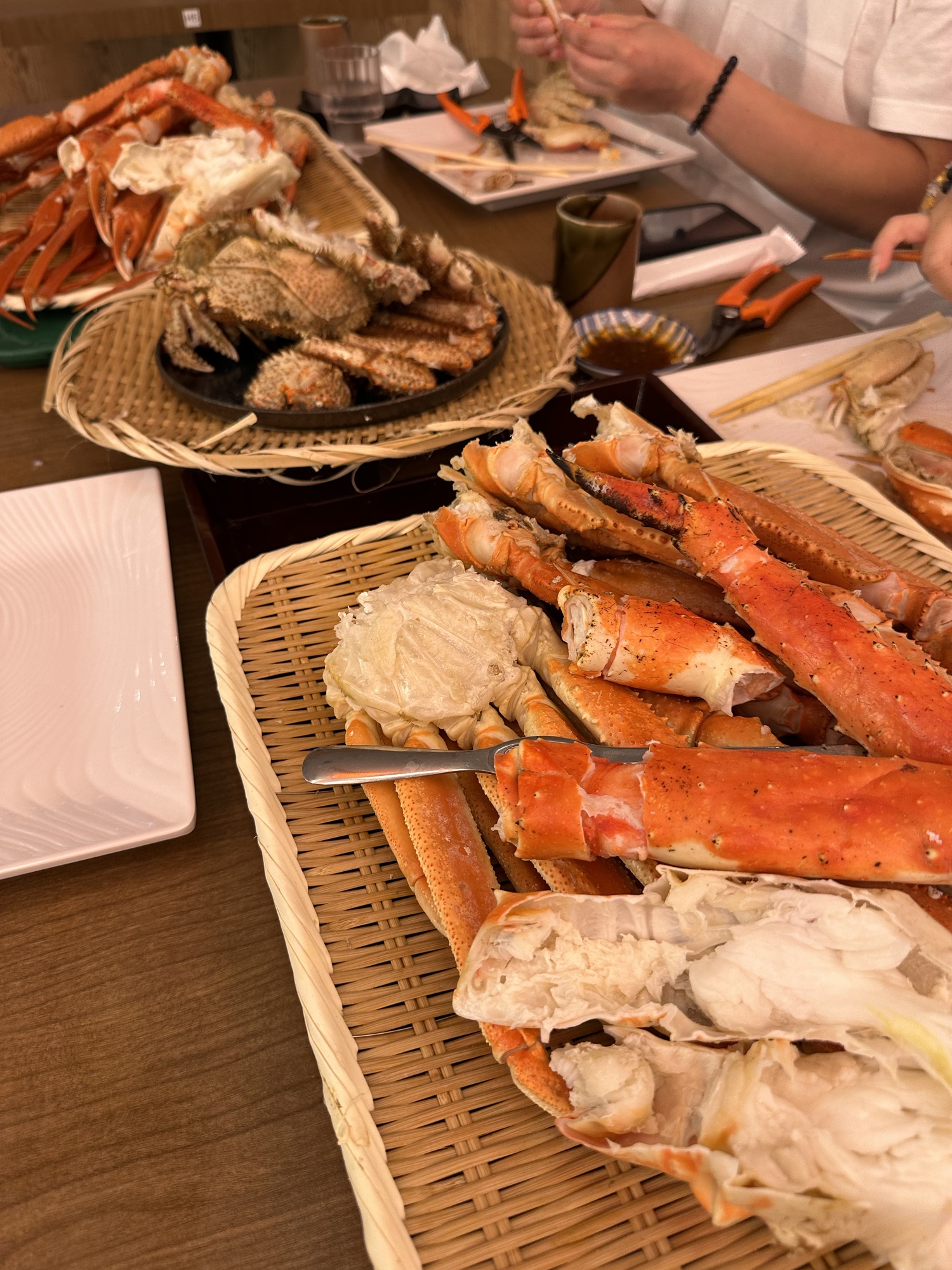
Dinner spots in Ginza are going to be closer to the Tsukiji Market area. Here are some places that I recommend:
- Ginza Happo AYCE Izakaya: High quality seafood and meat buffet with over 150 different dishes. This restaurant is my top recommendation, the food is incredible and worth the price tag ($80)!
- Miyagawa Honten: Unagi
- Kanimatsuri Crab: All-you-can-eat crab. There are tons of varieties, and it tastes deliciously fresh.
- Chuka Soba Ginza Hachigo: Soba

Day 3: Meiji Jingu, Harajuku, Shibuya Scramble
Pray at Meiji Jingu
Meiji Jingu is another very popular shrine well known for its daily ceremonies, stunning architecture, and serene surroundings. This Shinto shrine is nestled within a lush forest, right in the heart of Japan's bustling capital!

Dedicated to Emperor Meiji, the first emperor of modern Japan, and his wife Empress Shoken, Meiji Jingu offers visitors the chance to witness wedding processions or traditional Shinto rituals. Don't forget to take a peek at the sake and wine barrels that were given as offerings to the temple.
You may be surprised to find out that the nearby forest is actually man-made and was planted during the shrine's construction in 1920. The forest consists of donations from regions all around the country!

Since you already visited Sensoji Temple, I don't think it's essential to visit Meiji Jingu as well. But visiting Meiji Jingu includes beautiful walk in a forest, and there's also Meiji Jingu Museum and Yoyogi Park nearby, offering a peaceful escape from the city.
💡 Pro tip: To pray during your temple visit, place a coin offering in the offering box. Bow deeply twice. Clap twice, and after the second clap put your hands in prayer and make your prayer.
Meiji Jingu
Address: 1-1 Yoyogikamizonocho, Shibuya City, Tokyo 151-8557, Japan
Opening Hours: Sunrise until sunset
Admission: Free

Shop in Omotesando and Harajuku
After the shrine, it's time to do some (more) shopping! You'll be heading over to Takeshita Street in Harajuku now. You don't even have to take a train, but you will have to exit the forest so it'll be a 10-15 minute walk from Meiji Jingu Shrine.
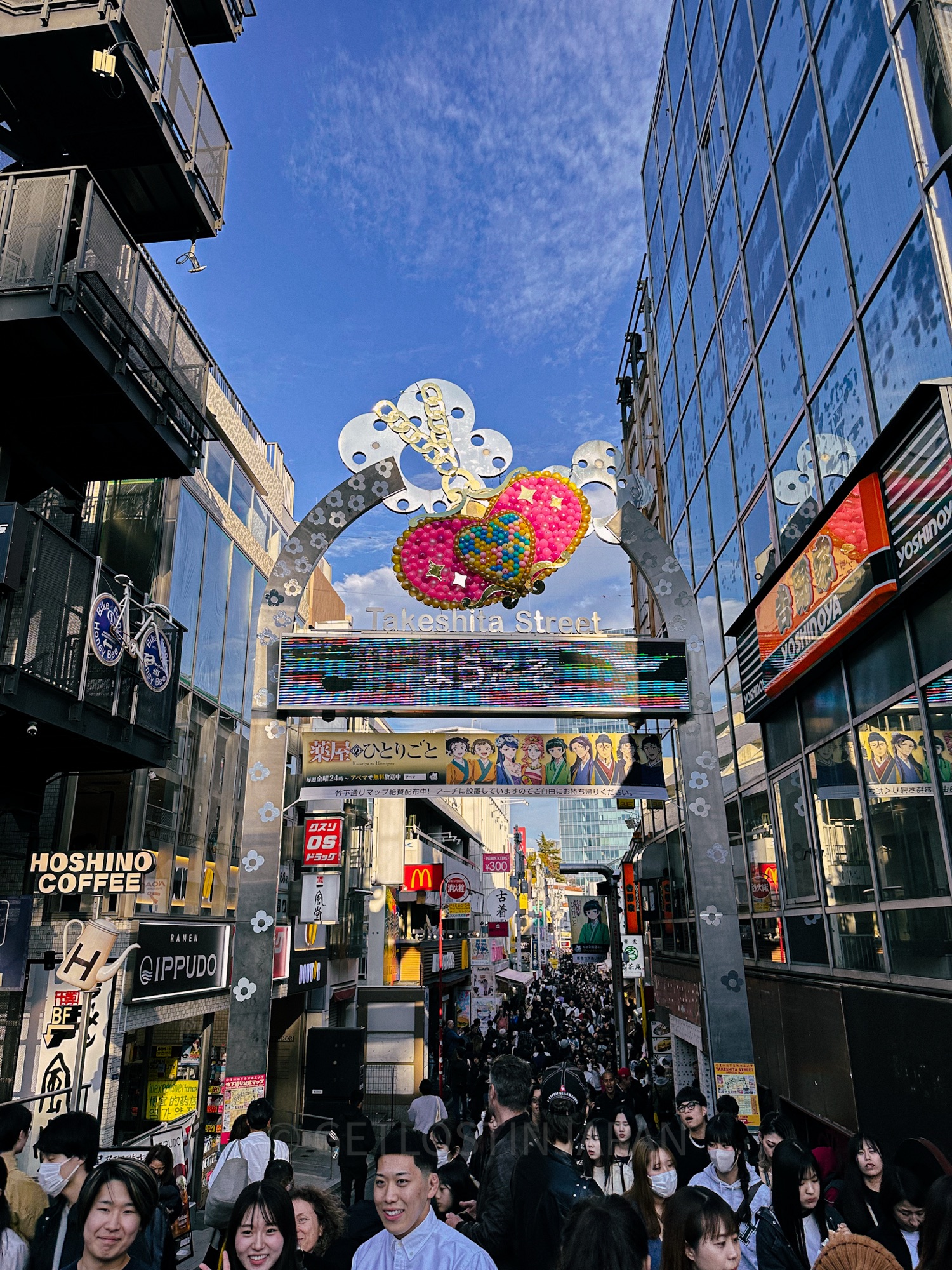
Harajuku and Omotesando are right next to each other but offer two distinct shopping experiences. Omotesando is a major luxury shopping neighborhood with lots of designer brands, like Ginza. Harajuku is better known for streetware and "kawaii" culture, and is more loud and colorful!
This area is possibly my favorite place in Tokyo! You can probably tell I love to shop, and there are so many fun and unique boutiques here. You also see so many fashionable people as you walk along the street. I especially love seeing people rock Lolita-style!
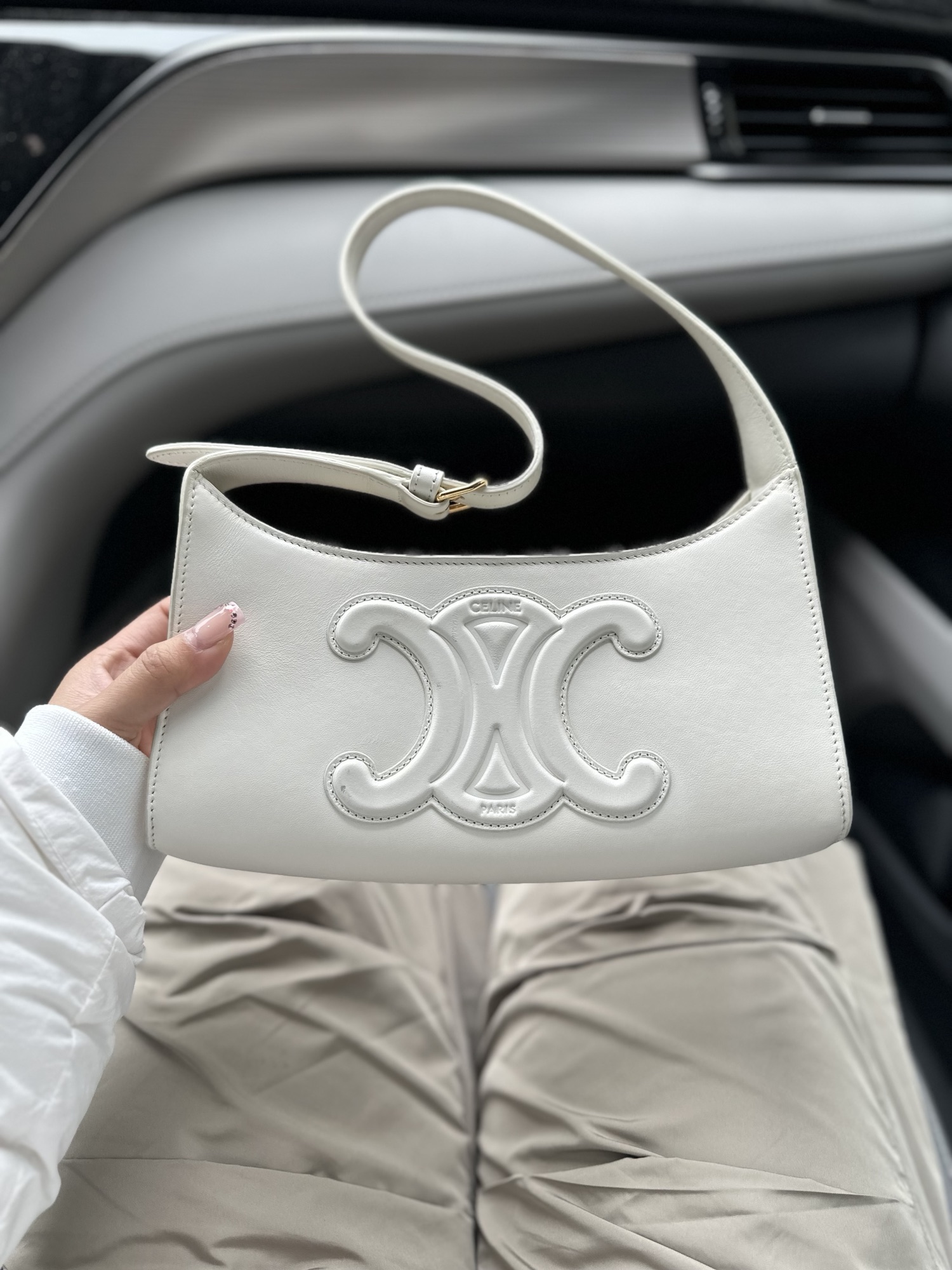
Trust me, after you finish visiting Tokyo, you'll be inspired to be a little more experimental.
💡 Pro tip: After walking through Takeshita Street, walk along Cat Street for lots of fun vintage shops.
My favorite stores in Harajuku and Omotesando
- X-Girl: A women's clothing shop that is a little pricey, but really good quality. It's definitely popular as I saw a bartender in Harlem wearing their shirt, so plus cool points for shopping here.
- Kindal: A pre-loved luxury store that also sells a lot of thrifted clothing. I bought my pre-loved Celine bag here for less than $700!
- The Shel'tter Tokyu Plaza: A really big department store that has very trendy Japanese brands loved by locals such as Moussy and Sly!
- Tokyu Plaza Harajuku: This building just opened in 2024. The interesting silver architecture and beautiful garden on the top floor will catch your eye. I didn't get a chance to go in, but I hear the food court is great.
- 2nd street: Pre-loved luxury store.
- Charles & Keith: Really nice shoes and bags for an affordable price. I bought some black wedges here that I wear every week.
- Laforet: A huge shopping mall that has really unique stores with alternative fashion and unusual boutique stores (think "kawaii" and streetwear).
See the famous Shibuya crossing
After you finish shopping your heart out, head on over to Shibuya! Shibuya is one of the busiest districts in Tokyo and is well known for its famous Shibuya Scramble Crossing. You'll see what I mean by "busy" once you try to cross the street and get immersed in the crowd.
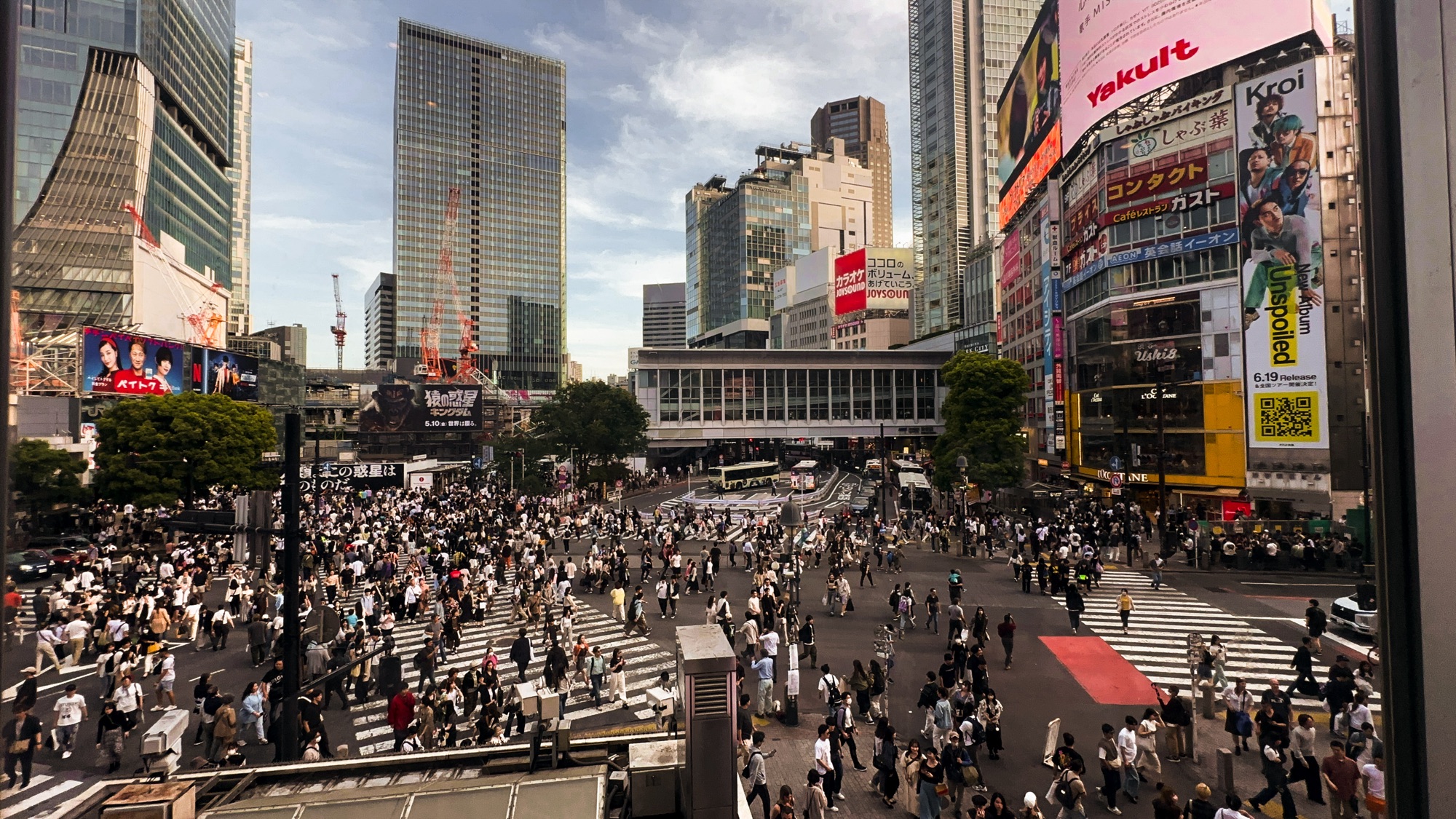
It's best to head on above to get to see the scramble from a bird's eye view, so you can really see just how insane it is. But before you go, don't forget to visit the famous loyal Hachiko dog statue here!
💡 Pro tip: Stick your shopping bags in a train station locker so you can explore the city hands-free. The lockers are very safe, but make sure to pin the location and take a photo of your locket to remember.

See the Sunset at Shibuya sky
Make your way to Shibuya Scramble Square and grab a ticket for Shibuya Sky, an open-air observation deck located 229 meters high on the 47th floor.
At Shibuya Sky, you’ll be treated to a breathtaking 360-degree view of Tokyo, with an excellent vantage point of the famous Shibuya Crossing. You'll be able to spot Tokyo Tower, Tokyo Stadium, and possibly even Mount Fuji if it's a clear day!

Two Instagram-worthy spots to check out are the glass escalator leading up to the rooftop and the Sky Edge, a glass corner with an amazing view.
Once you're inside, there's no time limit! Estimate to spend around an hour to an hour and a half here. After you're done with the observatory, there's also a ciafe and bar on the 46th floor of the building with more beautiful views of the city.
💡 Pro tip: The best time to go to Shibuya Sky is right before sunset, but I recommend booking 1 hour before sunset to leave room for waiting in line.
Shibuya Sky
Address: Japan, 〒150-6145 Tokyo, Shibuya City, Shibuya, 2 Chome−24−12 14階・45階・46階・屋上
Opening Hours: 10:00-22:30 (Last admission 21:20)
Admission: Adults 2,200 yen (online), 2,500 (in-person) Children: Discounted
Book Shibuya Sky tickets here

Hang out in Shibuya Center Gai
Now that you've seen the famous crossing, why not get lost and wander around Shibuya for a little bit?

Shibuya Center Gai, located right next to the Shibuya Crossing, is known as a hot spot for youth culture, and packed with clothing stores, arcades, and cafes to hang around. You can go around on your own or book a fun activity.
My favorite places in Shibuya:
- Nintendo Tokyo: If you love Pokemon, Donkey Kong, Animal Crossing, or anything from Nintendo, this official store is worth a visit.
- Pokemon Center Shibuya: While it's not the biggest pokemon store, this pokemon center is in a very convenient location and is also right next to the Nintendo store.
- Mega Don Quijote: Don Quijote is the biggest discount store in Japan, and you can find anything and everything here. All I can say is don't go at the very beginning of your trip, because you'll buy so much you won't be able to fill your suitcase with anything else!
- Komehyo: A pre-loved vintage thrift store with some great finds!
- Porter Exchange Shibuya: Super high-quality bags. The founder Yoshida survived war and destruction to make the brand what it is today. One of Porter's bags was even worn by Empress Michiko!

Nonbei Yokocho
For dinner, there are countless options. Shibuya has tons of fresh, trendy restaurants that you can try. However, if you're looking for a cultural experience, you can go to Nonbei Yokocho instead.
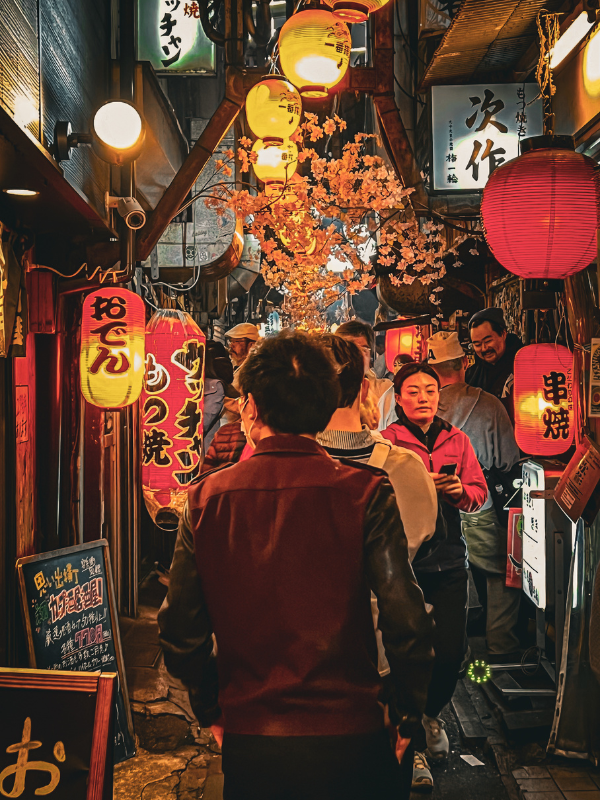
Nonbei Yokocho, also known as "Drunkard's Alley", is a cozy alleyway near Shibuya Station filled with tiny, intimate bars and restaurants that only fit up to 4-6 people each. With a certain nostalgic charm and ambiance reminiscent of Old Japan, it's a smaller version of Shinjuku's Omoide Yokocho that is a lot less crowded.
This area is a perfect place to experience old-fashioned izakaya (Japanese-style pubs), but keep in mind there aren't many English speakers here. If you get nervous with language barriers like I do, I recommend this tour to experience an izakaya dinner and a bar crawl with a Japanese guide!
🍺 Book the Shibuya Local Bar & Izakaya Crawl Evening Tour 🍺
Want to go Clubbing in Tokyo?
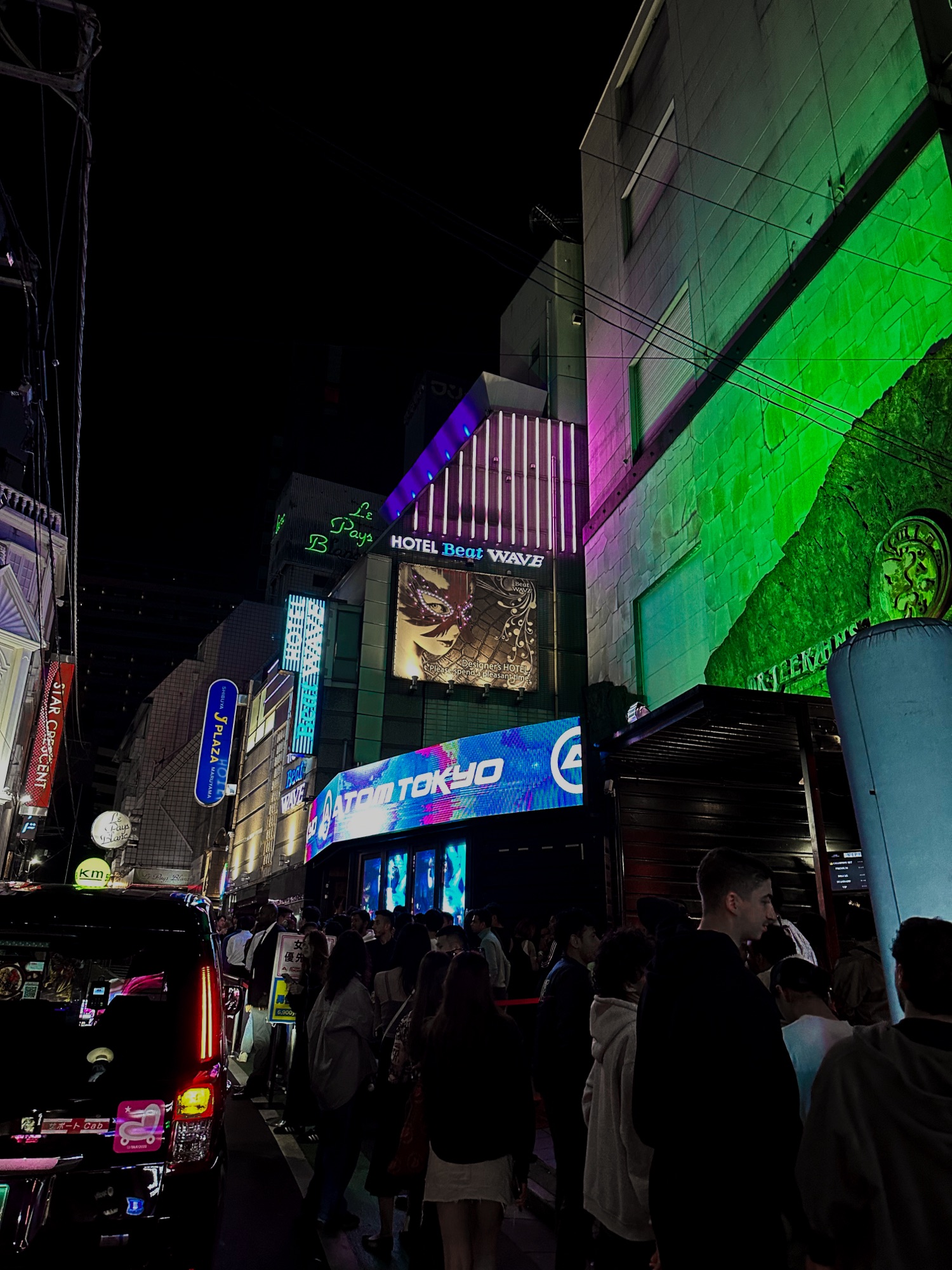
If you want to visit a club in Tokyo, you're in luck, because I am a clubbing extraordinaire.
Okay, maybe not, but I have been clubbing in Tokyo, and my chosen winners are Atom and Harlem, the most popular clubs in the city both located in Shibuya.
Harlem plays rap music, while Atom plays more EDM-style club music. Both are popular, and are located right next to each other, so you can decide which one you want to go to when you get there.
They play a lot of current hits (21 Savage, anybody?). I've been to Japanese clubs where they played American music that was 5-10 years old (cough, cough, Sapporo...) so rest assured that the vibes are right in these clubs.
I read online that you have to cover tattoos, so I was a little worried about entering, but once you're inside, no one really cares. The drinks and shots are pretty affordable, I think around $7 a drink. There are go-go dancers, too! Overall, it was a fun experience.
Harlem
Address: Japan, 〒150-0044 Tokyo, Shibuya City, Maruyamacho, 2−4, Dr.ジーカンス
Opening Hours: 22:00-05:00
Admission: Not sure, but I paid a $40 cover fee.

Day 4: Shinjuku Gyoen, Omoide Yokocho, Golden Gai
Shinjuku Gyoen National Garden
You'll start the day by visiting Shinjuku Gyoen, one of Tokyo's most popular parks. It's a short walk from Shinjuku Station and is one of the best places to see cherry blossoms when they bloom.

There are three different gardens in Shinjuku Gyoen. The first is a traditional Japanese landscape garden, with bridges and many flower displays. The second is a French garden and an English landscape garden, as well as a luscious greenhouse with tropical flowers.
I recommend visiting here if you visit during late March when the cherry blossoms bloom, or in autumn when the leaves change color around mid-November.

Tokyo Metropolitan Government Building
The Tokyo Metro Building is another great spot for a panoramic view of Tokyo, and this spot is free! The building consists of two towers, and there is an observatory in both standing at 202 meters tall.

Here, you'll be able to spot Tokyo Skytree, Tokyo Tower, Meiji Shrine, Tokyo Dome, and potentially even Mount Fuji.
If you already went to Shibuya Sky, feel free to skip this attraction. There are a couple other spots where you can observe Tokyo's cityscape that I'll mention later on.

Samurai Restaurant Time
You may have heard about the Robot Restaurant that was a big hit in Shinjuku before it closed in 2020. Now, it's been replaced by Samurai Restaurant Time, a bright neon, thrilling production that brings exciting samurai battles to accompany a delicious meal.

This is a good place to stop for lunch, especially if you want a little bit of a show. If you book tickets online, you get two free drinks along with your entry ticket. The food here is pretty good too, with bento, udon, ramen, and sushi choices.
The most exciting part is of course the samurai show, which includes tons of dancing, crazy colorful visuals, and some action-packed sword fights! If you have kids, they'll love it, but I also think adults will enjoy it too.

Explore Shinjuku
You'll find that Shinjuku has a wide variety of stores available here, so I recommend walking around the area and visiting whatever piques your interest. You could take a local food tour, or walk around the attractions.
Godzilla Head
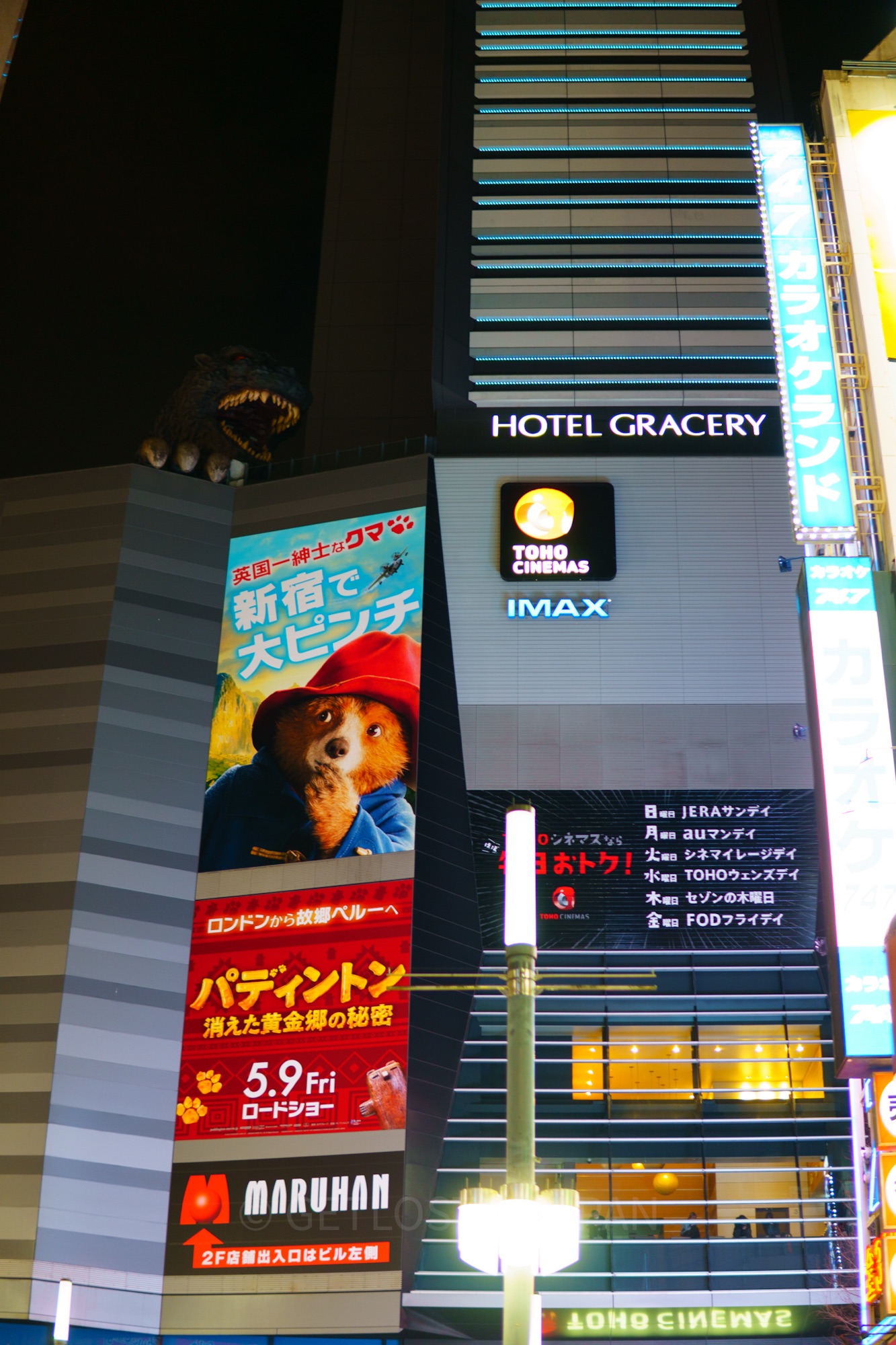
The Godzilla head in Shinjuku is a funny landmark to see while you're bumbling around the city. It's accessible from Hotel Gracery Shinjuku's Godzilla Terrace (you can actually stay here if you want!) It shoots fire out of its mouth every hour, so make sure to keep an eye out!
There's also an official Godzilla store there where you can grab some pretty cool Godzilla merch if you have the time.

Ninja Trick House
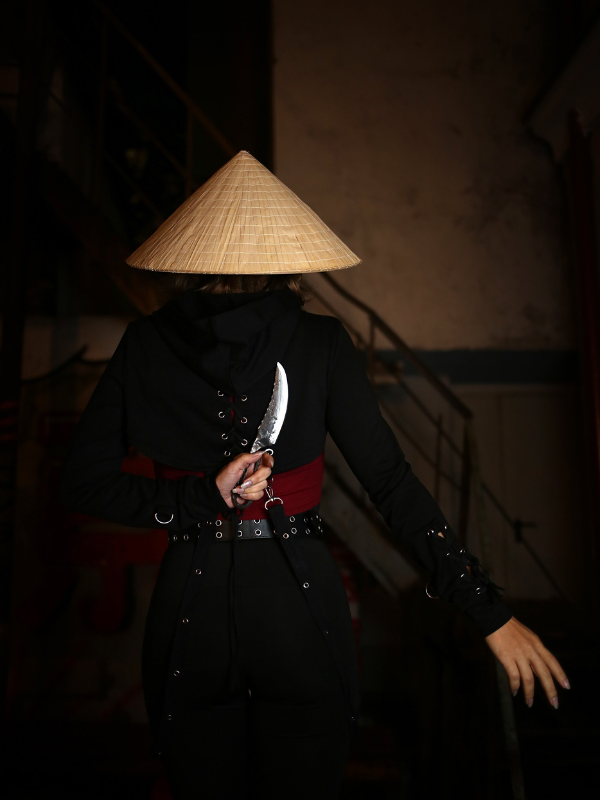
A short walk from the popular robot restaurant, the Ninja Trick House is a fun hands-on activity hidden on the fourth floor of a small building (hidden like a ninja!)
Here, you can throw ninja stars, master the sword, and learn some undercover espionage tips and tricks from a ninja! The experience will be around 1 hour in total, and while it's recommended to reserve in advance, they also accept walk-ins.
my favorite places in Shinjuku
- Rinkan Shinjukuten: Pre-loved accessory store
- Chrome Hearts: Popular streetwear store that sells silver accessories.
- Okura: Pre-loved luxury thrift store
- Kinokuniya Shinjuku: The main store of this ultra-popular chain features books, magazines, stationery, and fun novelties.
- Yodobashi Camera Shinjuku West: Electronics store that sells high-quality cameras and electronics for discounted prices. Keep in mind the menu will be in Japanese though.
Now that dinner time is approaching, you have a bunch of options for dinner and subsequent night plans in Shinjuku. The three that I'll be including are Omoide Yokocho and Golden Gai, or Kabukicho.
They are all located less than a 10-minute walk from each other, so feel free to walk around and explore for yourself.

Omoide Yokocho
One option for dinner is Omoide Yokocho, also known as "Piss Alley" by tourists. This atmospheric alley is famous for its old-world charm and cozy vibe.
The alley is lined with small restaurants and bars serving yakitori and izakaya dishes. Each stall can fit only 4-6 people, making it an intimate experience. While it’s a popular spot and honestly is quite touristy, it still offers a genuine taste of Tokyo's nightlife.

If you didn’t get the chance to visit Nonbei Yokocho in Shibuya, I highly recommend checking out Omoide Yokocho. It’s a great place to enjoy delicious food, meet new people, and soak in the ambiance of Tokyo’s lively streets under lantern light.

Get a Drink at Golden Gai
After a delicious dinner, make your way to Golden Gai for a drink or two (or maybe three... who’s counting?).
This narrow alley is packed with tiny bars that capture the nostalgic vibe of the Showa Era. Bar hopping is a must here, so wander around and find the spot that fits your taste. I have a couple of personal favorites that you should check out.

Deathmatch in Hell is a horror-themed bar where they play scary movies all night long. The atmosphere is perfect for horror fans, and I really liked talking with the owner, Wayne!
Art Bar Shuten Doji is a lively karaoke bar with a great mix of locals and tourists. They’ve got an awesome drink selection, and the karaoke is so fun!

Kabukicho Tower
Another option for nightlife is Kabukicho Tower, a 53-story super high-rise dynamic hub that offers a vibrant mix of dining, entertainment, and nightlife all in one place.
On the 2nd floor is the food court Shinjuku Kabuki Hall and Kabuki Yokocho, offering an eclectic array of cuisines from across Japan and Korea.
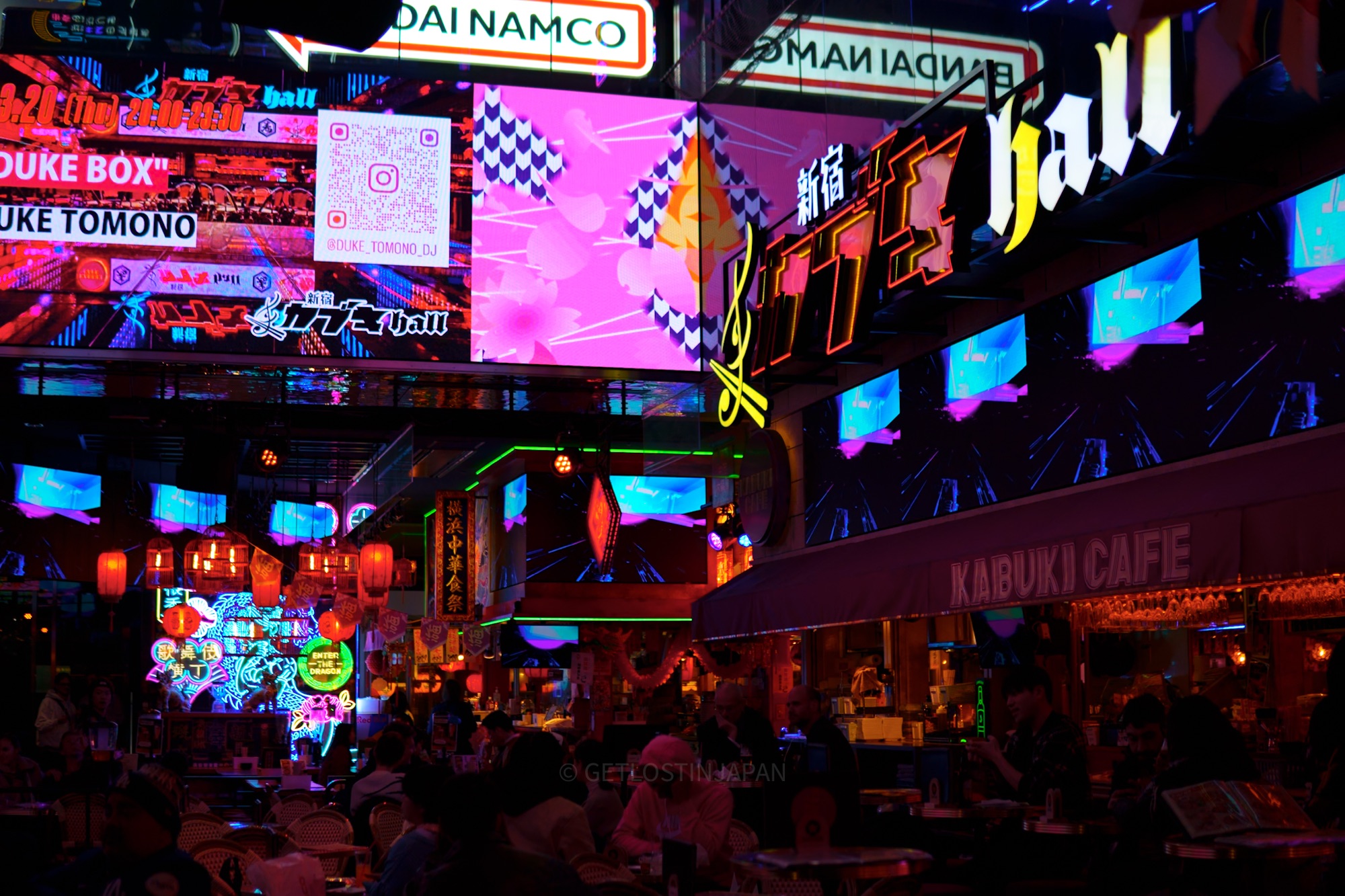
I hate to say it, but the food sucks. It's more of late-night drunchie food. However, DJs play near the food court so it can be a fun late-night spot.
There's also the Zerotokyo club located inside the tower.Several spots stay open until 5 AM, so you can stay out all night until the trains start running again!
💡 Pro tip: Keep in mind Kabukicho Tower is in Kabuchiko, Shinjuku's red light district. If you venture out around Kabukicho, stick to the restaurants and bars on the ground floor where you can see inside.

Day 5: Gotokuji Temple, Roppongi, Akasaka
Now that the end of your trip is approaching, I've dedicated your fifth day in Tokyo to exploring some hidden gems and South Tokyo.
I'd like to note that while the attractions I've included here are well worth visiting, I wouldn't label any of them as "essential stops", so feel free to replace today with something else. If you want to go back to any of the other areas, or maybe do more shopping, this day can be substituted.
Now, let's explore south Tokyo!
See Lucky Cats at Gotokuji Temple
Our first stop today is Gotokuji Temple, an extremely unique temple that is the birthplace of the Maneki-Neko. Not sure what that is?
Have you ever seen a waving cat figurine in an Asian restaurant that is said to bring good fortune? Many people think that the cat is from China, but it hails from Gotokuji, also known as the Lucky Cat Temple!

To give you some context, it was said that in the 1600s, a daimyo was saved from a lightning bolt during a thunderstorm by an abbot's cat.
The Temple built the shofuku-den (1000 cat shrine) in the 1680s to enshrine the cat that brought good fortune, also known as the "manekineko". Ever since then, visitors come to the temple to pray for family health, business, luck, and happiness.
It's a little out of the way from Tokyo's center, but it's worth a visit if you enjoy history and culture. Expect to spend around 45 minutes here during your visit.
Gotokuji
Opening Hours: 6:00 - 17:00
Address: Gotokuji 2-24-7, Setagaya-ku, Tokyo, 154-0021

Shiro-Hige's Cream Puff Factory
Not too far down the road from Gotokuji is Shiro-Hige's Cream Puff Factory, a cute bakery that makes delicious cream puffs in the shape of Studio Ghibli's most famous character: Totoro!
For Studio Ghibli fans, this is a hidden gem you won’t want to miss. Fun fact: the owner of Shiro-Hige is the sister-in-law of Hayao Miyazaki, Studio Ghibli’s founder, and the cafe is officially recognized by the studio.

The moment you step inside, you’ll feel the warm, cozy charm of the place. It’s split into two levels: a bakery on the first floor where you can grab your Totoro cakes, and a cafe upstairs where you can enjoy pasta dishes along with other pastries.
The cream puffs are only 500 yen, but they’re super popular and sell out fast! Booking in advance is recommended, though the website is in Japanese, which might make it a bit tricky. You can try walking in, but keep in mind they’re often sold out by mid-day.
Shiro-Hige’s Cream Puff Factory
Address: 5 Chome-3-1 Daita, Setagaya City, Tokyo 155-0033, Japan
Opening Hours: 10:30-18:00 every day except Tuesday
Tuesdays: Closed

Roppongi
We'll start making our way over to Roppongi now. As I said before, Gotokuji and Shiro-Hige are a bit out of the way, so the train ride back to the city will take a little under 30 minutes.
Roppongi is a high-end luxury district known for its artistic culture, beautiful hills, and exciting nightlife. We'll visit one of the art museums, get a great view of Tokyo Tower and the city via the Roppongi Observation Deck, and end the night in Akasaka, a big foodie spot.

Roppongi has a lively arts scene, and at the heart of it is the Roppongi Art Triangle. It’s made up of three incredible museums: the National Art Center, Tokyo, the Mori Art Museum, and the Suntory Museum of Art.
They are all very popular, but I recommend visiting the National Art Center because it's the largest, with tons of variety.

National Art Center
The National Art Center is a must-visit for art lovers!
Unlike most museums, it doesn’t have permanent exhibits, but it’s one of Japan’s largest art spaces, with 14,000 square meters dedicated to fresh and creative exhibitions.

With two souvenir shops, four restaurants, and endless art to take in, you’ll want to plan your visit carefully. Keep in mind that you need an admission ticket to access the gift shop, and popular items sell out fast!
Booking in advance is a must since tickets aren’t sold at the museum without a local bank account, and the queues can get long. The museum itself is free, but you’ll need to pay for access to the special exhibits.
It's best to visit on a weekday to avoid a long queue. It's closed on Tuesdays, the same as Shiro-Hige! Plan to spend around 2-3 hours browsing the exhibits.
National Art Center, Tokyo
Address: Japan, 〒106-8558 Tokyo, Minato City, Roppongi, 7 Chome−22−2 国立新美術館
Opening Hours: Monday, Wednesday, Thursday, Sunday: 10:00-18:00
Friday, Saturday: 10:00-20:00
Tuesday: Closed
Admission: Free, with additional fee for special exhibits


Mori Art Museum and Roppongi Observation Deck
An alternative to the National Art Center is the Mori Art Museum, another popular art museum displaying the best in contemporary art and architecture.
It's located in Roppongi Hills Mori Tower, which also houses the Tokyo City View Observation Deck for the best views of Tokyo Tower. If you decide to go here, you'll get some incredible views from the 52nd floor, especially if you visit at night.
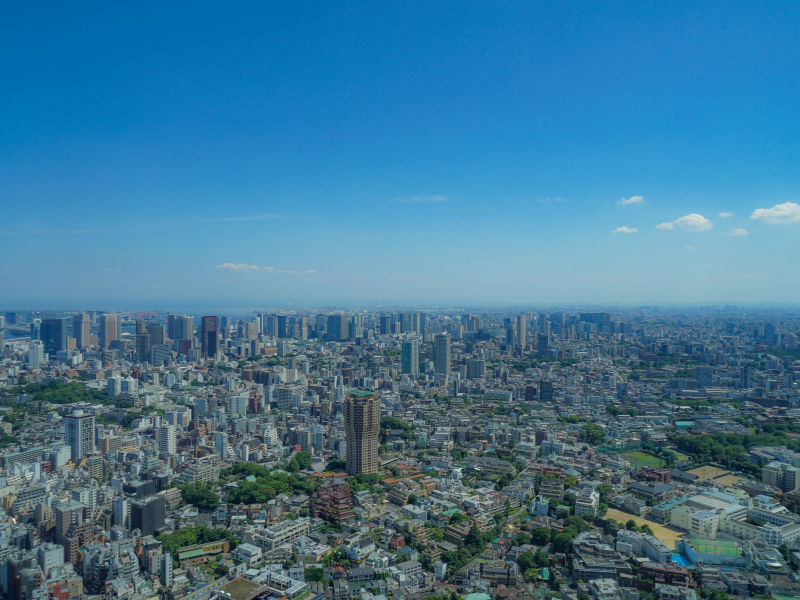
Modern art isn't really my thing, so I opted to skip this museum. However, the displays seem very unique and interesting based on what I saw online.
The observatory and the Mori Art Museum are separate tickets, so you could also visit the observatory after the National Art Center.

Experience Omakase in Akasaka
We'll have dinner in Akasaka, a business district that is known for its luxury and extravagant dining, just like Roppongi. It's a great foodie spot, and is also home to the Suntory Museum of Art, the last museum in the Roppongi Art Triangle.
I recommend trying omakase in Akasaka if you like seafood and haven't experienced an omakase in Japan yet. This Japanese dining experience elevates traditional sushi and leaves the menu entirely up to the chef.

Omakase is usually high-end and full of artistic creativity, using fine and seasonal ingredients.
You'll find many elegant dining omakase options in Akasaka. Akasaka Sushi Saito, Shino, Okamoto, and Sorahana are all very highly rated, and the latter two have 1 Michelin star.

Have a drink around Roppongi
Roppongi and the surrounding area is well known for being a lively entertainment district, so if you still have energy after dinner you can end your night with bar hopping.

I recommend checking out Sky Lounge Stellar Garden at Prince Park Tower. It's a bar with jaw-dropping panoramic views right next to Tokyo Tower! You can admire the beautiful glow the tower emits at nighttime while enjoying a tasty drink.
However, keep in mind it is veryyyy popular. I tried visiting around 7-8 PM and was told the wait was hours long. They recommend coming right when they open at 5 PM.

Day 6: Take a Day trip From Tokyo
You've explored most of the top attractions of Tokyo now, and have gotten a chance to experience the differences in each area. I've saved the last day in your 6 day Tokyo itinerary for a day trip outside of the city!
The most popular day trips are: Mount Fuji, Nikko, Hakone, or Tokyo Disney. All of these excursions will take the whole day, and are all worth visiting.
For more ideas on the best day trips from Tokyo, click here. And if you're visiting in the winter, click here for the best day trips in winter.
Mount Fuji
Mount Fuji, Japan’s most iconic landmark, is a must-see and offers a truly awe-inspiring experience if you're lucky enough to spot it.
While viewing Mount Fuji can be tricky due to unpredictable weather, the effort to catch a glimpse is absolutely worthwhile, and there's still plenty to do around the area!
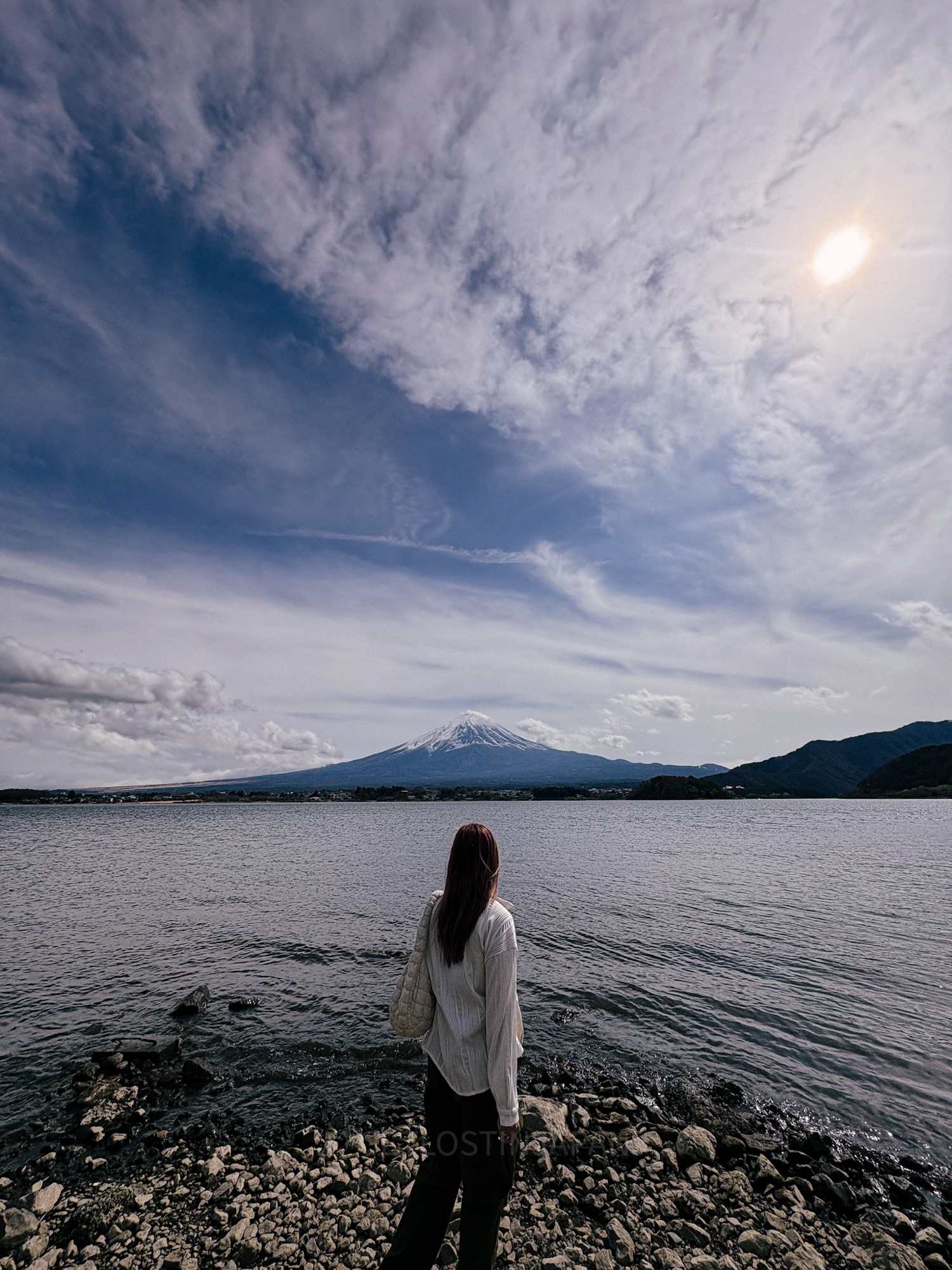
The Mount Fuji area is home to five picturesque lakes, including Lake Kawaguchi, a serene spot perfect for a leisurely walk and stunning photos. Nearby, you’ll find Oshino Hakkai, a cluster of eight tranquil ponds formed naturally by Mount Fuji's volcanic eruptions.
While you're around, you can visit Yamanashi or Oishi Park to view seasonal flower displays, or head to Gotemba Premium Outlets for some retail therapy and more views of Mount Fuji. It’s the perfect day trip to escape the city, breathe in fresh mountain air, and soak in the natural beauty of Japan’s most famous peak.
Located about 2 hours from Tokyo, Mount Fuji is accessible by car, but I recommend joining a tour if you won't be renting a car as public transportation is limited here.

Hakone
Hakone is one of the best day trip destinations from Tokyo, offering a perfect blend of natural beauty, cultural attractions, and relaxation.
Known for stunning views of Mount Fuji across Lake Ashinoko, Hakone is especially popular during autumn when the changing leaves transform the landscape into warm colors of gold, red, and amber.
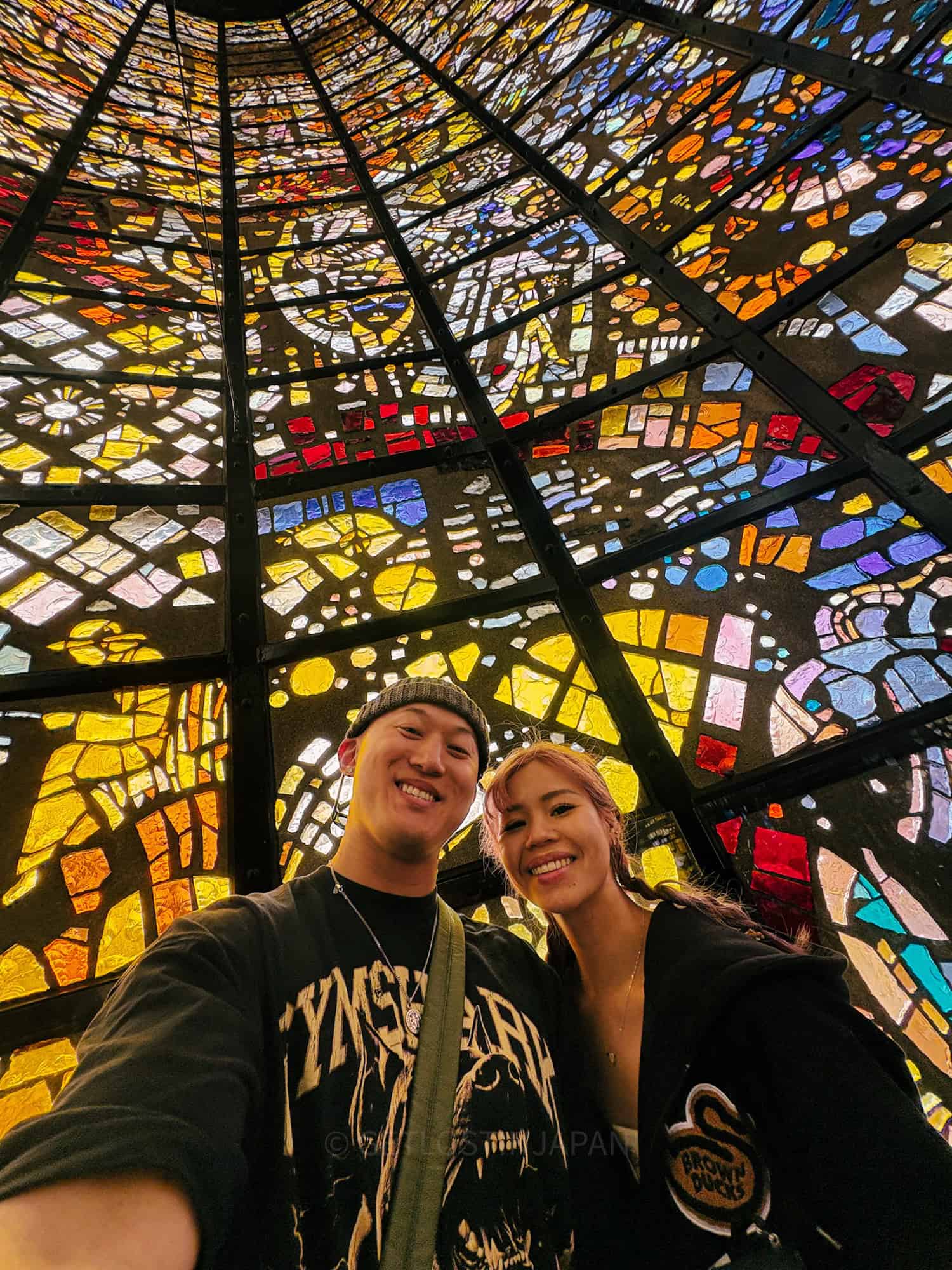
The area is famous for its relaxing hot springs, with numerous onsen resorts scattered throughout the region. We reserved a day use private onsen at Hakone Yuryo, and loved our experience.
Notable attractions include the Hakone Shrine with its picturesque red torii gate standing on Lake Ashinoko, the Hakone Open-Air Museum, the POLA Museum of Art, and the Venetian Glass Museum. You could also take a scenic cruise on Lake Ashinoko for 30 minutes.
If you're interested in shopping, I loved the Gotemba Premium Outlets that are located between Hakone and Mount Fuji.
Since Hakone is close to Mount Fuji, you could combine the two in a guided tour. Or if you can allocate a few days to exploring the two areas, I highly recommend it!

Nikko
Nikko is another amazing day trip option for an escape from Tokyo's chaos. Just 1 hour and 40 minutes from the city via Shinkansen, it’s a peaceful retreat filled with stunning waterfalls, relaxing hot springs, and one of Japan’s most remarkable shrines.
The highlight of Nikko is the Toshogu Shrine, a breathtaking masterpiece adorned with intricate carvings, gold accents, and vibrant colors. It’s the lavish mausoleum of Tokugawa Ieyasu, the founder of the Tokugawa shogunate. Even if you’re not familiar with Ieyasu, the sheer craftsmanship of this site will leave you in awe.

Nikko is also the gateway to Nikko National Park, a haven of natural beauty with mountains, waterfalls, and even wild monkeys. Don’t miss Kegon Falls, one of Japan’s top three waterfalls!
The area is also famous for its onsen. Nikko boasts eight different onsen resort areas, each offering unique mineral-rich waters. While an overnight stay would let you fully unwind, many onsen offer day passes, so you can still enjoy the mineral hot spring water before heading back to Tokyo.

Tokyo Disney
The Disney Resort in Tokyo is super, super fun, and a very popular attraction. If you're a Disney lover, you probably shouldn't miss visiting here. It's one of the world's largest theme parks, and it's only 15 minutes away from Tokyo Station.
There are two theme parks, Tokyo Disney and Disney Sea. Tokyo Disney is very similar to the classic Disneyland much like the parks in Los Angeles and Orlando, so I recommend visiting DisneySea which is exclusive to Japan.

DisneySea is more nautical-themed, with ports overlooking Tokyo Bay. At DisneySea there are great photo spots, amazing food, and an incredible nighttime parade with a bright, fantastic water projection show. You'll also get to meet Duffy and Friends, who are exclusive to DisneySea and not seen anywhere else in the world!
Disney is always an all-day excursion, and this park is no different. I recommend coming as early as you can, because some people line up as early as 8 am!
🐭 Book your Tokyo Disney Resort Park Ticket here! 🐭
🚌 Book your Tokyo Disneyland/DisneySea Shuttle Bus ticket from Shinjuku here! 🚌
Tokyo DisneySea
Address: 1-13 Maihama, Urayasu, Chiba 279-8511, Japan
Opening Hours: 09:00-21:00, varies
Admission: Book tickets here

Best Food Spots in Tokyo
Best cafes
Meikyoku Kissa Lion, Kojo (Ueno), Tully's Coffee, Haute Couture
Best Lunch
Motodane, Chuka Soba Ginza Hachigo, Tsukiji Fish Market, Oniyanma Udon
Best Restaurants
Wagyu Ichinoya Asakusa, Mizuguchi, Ten, Saito
Best Bars
Tir an nOg, Bar TRENCH, Ginza Music Bar, New York Bar, Sky Lounge Stellar Garden

Tokyo Travel FAQs
Is Tokyo safe?
Yes, Tokyo is incredibly safe! It's a lively city, but I've always felt very safe during all my visits.
Japan is known for being one of the safest countries for travelers. However, like any major city, it’s always a good idea to stay alert and keep your belongings secure. Avoid leaving valuables unattended, especially in crowded areas, and be cautious when using ATMs late at night.
Also, remember to respect local customs and be mindful of your behavior in public spaces—Japanese society values courtesy and order.
How do I get to Tokyo?
Getting to Tokyo from Narita or Haneda airports is fairly straightforward. It takes about 30-40 minutes from Haneda and around an hour from Narita by train.
The subway trains are a convenient option but keep in mind that space can be tight, especially if you have large luggage. We found it a bit cramped and felt like we were taking up space and disturbing other passengers. I recommend using Japan’s luggage forwarding service for your check-in luggage.
Another option is to take a limousine or a private transfer car, which can save you more time and offer a more comfortable journey.
What's the weather in Tokyo like?

How many days should I spend in Tokyo?
You can spend as many as 2 days to up to a week or more in Tokyo. There's an abundance of things to see and do in this huge, lively city.
6 days in Tokyo is the perfect amount of time to enjoy all the main attractions at your leisure and not feel rushed! My perfect range is at least 4-5 days in Tokyo, so 6 days is ideal to include a day trip.
If you need to trim your Tokyo stay, you can check out my 4 day, 2 day, and 1 day Tokyo Itineraries.
Where to Stay in Tokyo?
There are a couple of different neighborhoods that are good choices to stay in Tokyo. I have a detailed post on the best area to stay in Tokyo for first-time visitors you can check out here.
Here are a couple of quick options for you down below though.
1. Ginza

Ginza is my top choice because it's centrally located.
If you're visiting Japan for the first time, you'll likely want to check out Asakusa and Shinjuku, which are on opposite sides of the city. Ginza is perfectly positioned in between, making it convenient to access both.
It’s also close to the Tsukiji Fish Market, so you can easily enjoy fresh and delicious breakfast and lunch. On top of that, it’s surrounded by plenty of shopping options and just a short walk from the main subway lines.
Top 2 Hotel Picks in Ginza
2. Shibuya or Shinjuku
Shibuya and Shinjuku are busy, high-energy neighborhoods that will always have something to do regardless of the time. If you're looking to be right in the heart of Tokyo's action, these areas are perfect. With plenty of shopping, dining, and entertainment options, you'll always have something to do.
Since these areas are located on the western side of Tokyo, you'll need a bit more travel time to reach places like Asakusa and TeamLab Planets. But since both these areas have easy access to public transportation, it shouldn't be too much of a hassle.
I'll include my 2 top hotel choices here, but to learn more about the best hotels in Shibuya, click here.
Top 2 Hotel Picks in Shibuya and Shinjuku
3. Ueno
I'd personally choose to stay in Ueno over Asakusa. While Asakusa is home to the famous Sensoji Temple, Ueno is more centrally located, making it easier to access other parts of the city and top attractions via train.
Ueno offers a more peaceful, relaxed atmosphere. Plus, you can enjoy the beautiful Ueno Park and explore its many museums, making it a great spot to unwind after a day of sightseeing.
You can walk around around Ueno Ameyoko, with plenty of local markets and street food options! There are lots of shops to explore around here as well.
Top 2 Hotel Picks in Ueno
What do I pack?
👚 Clothing according to the season: Tokyo can get very humid in the summer. I recommend layers and skirts.
🔋 Portable charger: An absolute essential, with the amount of sightseeing you'll be doing every day.
👟 Comfortable walking shoes: Your feet will hurt from all the walking you'll be doing. I would even recommend bringing two pairs!
👩💼 Passport: I'm sure you know why you need this item...
💴 Yen: You can convert it at the airport, so this one isn't necessary, but if you plan on visiting more rural areas or temples I would bring at least $200 in yen.
Renting a Car in Japan
Now, full disclaimer, I don't recommend renting a car while you're in Tokyo. It's scary!
However, we rented a car to drive to Hakone and Kawaguchiko and loved it. It was so much easier to see all the landmarks we wanted to visit in the day. Kawaguchiko especially isn't easy to navigate without a car or tour bus.

We personally used Orix with Booking and were able to rent our car easily. You can check prices, choose the type of vehicle you want, and add affordable full coverage insurance upon checkout.
Tips for Renting a Car in Japan
- Drive on the left: You’ll be driving on the left side of the road, and the steering wheel is on the right. It’s not too difficult to get the hang of, but go easy to have some time to adjust before driving in the city. I personally would avoid driving in cramped cities like Tokyo or Osaka.
- Learn the rules: Watch a YouTube video about the rules! You have to come to a FULL stop at the stop signs, big red signs that read “止まれ”. Always remember that pedestrians have the right of way, and make sure everyone wears a seatbelt.
- Get car insurance: Between tiny parking spots, winding roads, and the occasional wildlife sighting, car insurance is worth the peace of mind. When you use Booking, you have the option to add insurance at checkout.
- Pick a car that fits: Japan isn’t exactly known for wide open roads, especially in the countryside. A small or mid-sized car is usually best. Booking lets you filter by size, transmission, and even luggage space, so you know what you’re getting.
- Watch out for toll roads: If you’ll be using the expressways, it’s best to include an ETC card. Japan has a lot of toll roads! The card makes paying tolls way faster and way less stressful than having to look for cash.
What you need to rent a car in Japan
- Bring your valid license from your home country.
- An International Driving Permit (IDP) based on the 1949 Geneva Convention. We got ours in 20 minutes with Triple A in California before we left for Japan.
- A credit card under the driver’s name for the deposit.
- Most rentals require you to be at least 18, and some may require you to have had your license for a year. If you're under 25, there might be a young driver fee.
Ready to try left-sided driving? Click here to book with Booking!

Don’t Forget Travel Insurance
While traveling in a foreign country, it's essential to get full coverage trip insurance in case an emergency happens. VisitorsCoverage has affordable prices and great insurance benefits.
Additionally, if you have the Chase Sapphire Reserve Credit Card, you get automatic car and trip insurance!

Conclusion: 6 Day Tokyo Itinerary
There you have it, your complete 6 day Tokyo Itinerary! I made this itinerary with the hope that you'll have the most AMAZING first time in Tokyo! Japan truly has a special place in my heart, and I hope that you enjoy the country as much as I do.
If you ever have any travel questions, feel free to comment or reach out to audrey@getlostinjapan.com! I'd love to hear from you and am always looking for how to make my blog better.
Related Posts
Best Ryokan and Hotels with Private Onsen


